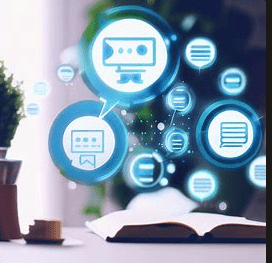
Introduction
Chatbots have emerged as a powerful tool in the realm of customer service and efficiency enhancement. These automated systems allow businesses to provide instant support, address customer queries, and streamline various processes. However, if not implemented correctly, chatbots can have adverse effects on customer satisfaction and business outcomes. It is crucial to understand the purpose, goals, and potential pitfalls of chatbot implementation to ensure they deliver a positive experience for customers.
1: Establishing the Purpose and Goals of the Chatbot
To develop an effective chatbot, it is vital to determine its purpose and goals. Ask yourself questions such as:
1: What Problems Can a Chatbot Solve?
Identify the specific problems your chatbot will address. Whether it’s answering frequently asked questions, providing product recommendations, or assisting with order tracking, defining the purpose will help tailor the chatbot’s functionality.
2: Understanding Customer Pain Points
Consider the pain points your customers experience when interacting with your business. Is it long response times, difficulty finding information, or complex processes? By understanding these pain points, you can design the chatbot to address them effectively.
3: Creating an Efficient and Effective Tool
Once you have identified the problems and pain points, it’s time to create an efficient and effective chatbot. Ensure the chatbot’s capabilities align with your goals and that it can deliver satisfactory results to users.
2: Designing a Chatbot That Understands Natural Language
A critical factor in chatbot success is the ability to understand natural language and provide accurate responses. Consider the following:
1: Natural Language Processing (NLP)
Implement natural language processing technology in your chatbot to enable it to comprehend and interpret user queries effectively. NLP allows chatbots to understand context, intent, and sentiment, improving the quality of responses.
2: Training and Testing
Thoroughly train and test your chatbot before deploying it. Use a diverse range of real-world scenarios to ensure it can handle various user inputs and provide accurate and relevant information.
3: Continuous Improvement
Chatbots should be continuously improved based on user feedback and evolving language patterns. Regularly update and enhance the chatbot’s NLP capabilities to keep pace with changing customer expectations.
3: Incorporating a Human Backup
While chatbots can handle many customer inquiries effectively, there will always be scenarios where human intervention is necessary. Here’s how to incorporate a human backup:
1: Live Chat Option
Offer a live chat option alongside the chatbot to provide customers with direct access to human assistance when the chatbot is unable to address their needs. This ensures timely and accurate support, even if the chatbot falls short.
2: Seamless Handoff
Ensure a smooth transition from the chatbot to the human operator. When a chatbot identifies a query beyond its capabilities, it should seamlessly transfer the conversation to a human agent without causing frustration or delay for the customer.
3: Training Human Operators
Equip your human operators with comprehensive training and resources to handle chatbot escalations effectively. This ensures consistent and satisfactory assistance for customers who require human intervention.

4: Avoiding Common Chatbot Mistakes and Implementing Best Practices
To ensure the success of your chatbot implementation, it’s important to avoid common mistakes and follow best practices. Consider the following:
1: Regular Updates and Maintenance
Regularly update and maintain your chatbot to address any issues, improve performance, and incorporate new features. This ensures that the chatbot remains relevant and effective over time.
2: Monitoring and Analytics
Implement robust monitoring and analytics tools to track the chatbot’s performance, identify areas for improvement, and gather insights into user behavior. These metrics help optimize the chatbot’s effectiveness and user experience.
3: Iterative Improvements
Continuously iterate and enhance your chatbot based on user feedback and data analysis. Actively seek customer input to identify pain points and areas where the chatbot can be improved to deliver a more satisfactory experience.
Frequently Asked Questions (FAQs)
FAQ 1: How can chatbots streamline customer service?
Chatbots streamline customer service by providing instant responses to common queries, reducing response times, and enabling 24/7 availability. They automate repetitive tasks, freeing up human agents to focus on more complex issues.
FAQ 2: What if the chatbot fails to understand a customer’s query?
In situations where the chatbot fails to understand a query, it’s crucial to have a human backup in place. Providing a live chat option ensures customers can receive timely and accurate assistance, even if the chatbot falls short.
FAQ 3: How can businesses test the effectiveness of their chatbots?
Businesses can test chatbots by simulating various scenarios and user inputs during the development stage. It’s essential to conduct thorough testing to ensure the chatbot can handle different situations and deliver satisfactory results.
FAQ 4: Can chatbots be personalized for individual customers?
Yes, chatbots can be personalized based on customer data and preferences. By leveraging customer information, chatbots can provide tailored recommendations, personalized responses, and a more personalized customer experience.
FAQ 5: Are there any risks associated with chatbot implementation?
While chatbots offer numerous benefits, there are potential risks such as misinterpretation of user queries and privacy concerns. It’s crucial to implement security measures and regularly monitor and update the chatbot to mitigate these risks.
FAQ 6: How can businesses measure the success of their chatbot implementation?
The success of chatbot implementation can be measured through key performance indicators (KPIs) such as customer satisfaction ratings, response times, resolution rates, and cost savings. Monitoring these metrics helps assess the impact of chatbots on business outcomes.
Conclusion
Chatbots have emerged as a popular tool for streamlining customer service and increasing efficiency. However, businesses must implement chatbots correctly to avoid potential pitfalls and provide a positive customer experience. By establishing the purpose and goals of the chatbot, designing it to understand natural language, incorporating a human backup, and following best practices, businesses can harness the power of chatbots to deliver efficient and satisfactory experiences to their customers.
